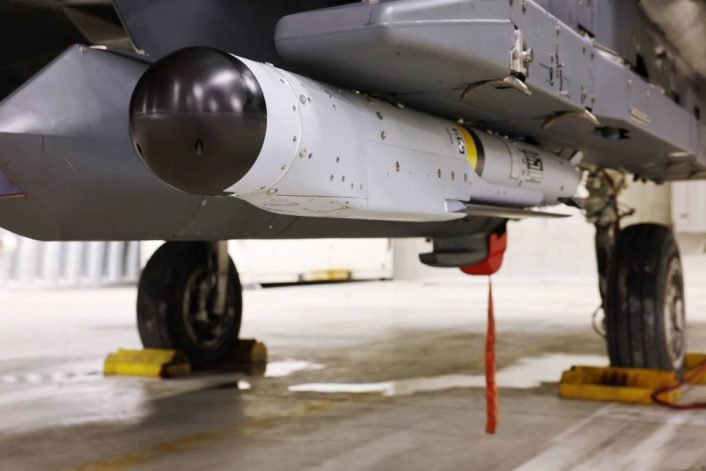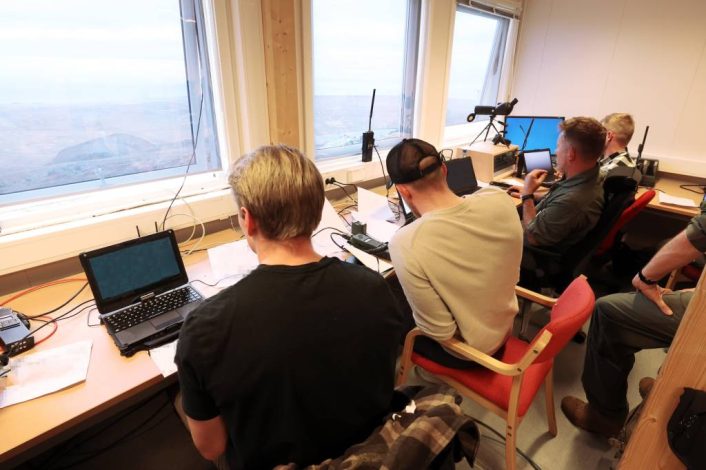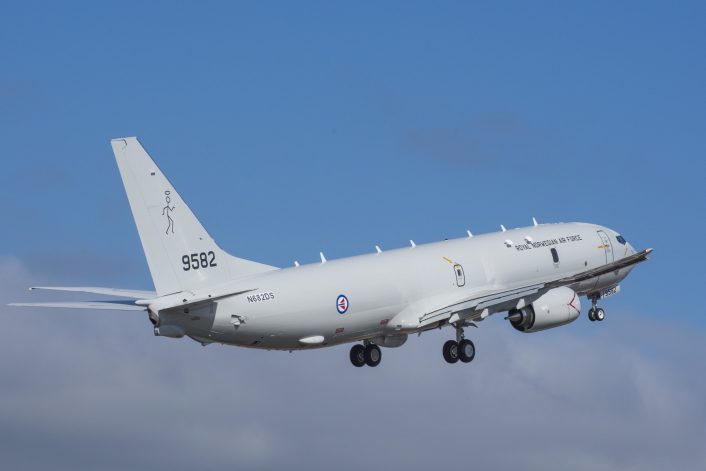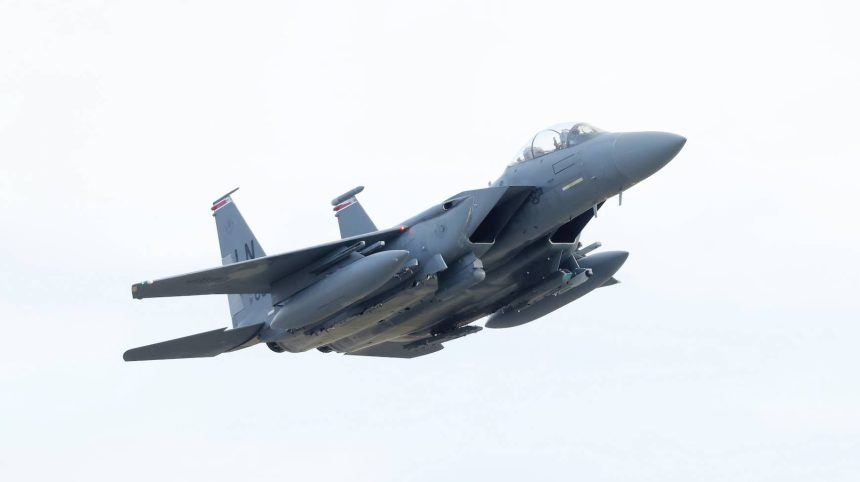The groundbreaking test saw Norwegian soldiers take control of two GBU-53 glide bombs released by two F-15Es and direct them towards the target.
The Norwegian Armed Forces disclosed a recent military cooperation test with the U.S. Air Force, which involved two F-15E Strike Eagles, based at RAF Lakenheath, dropping GBU-53 glide bombs. The test, conducted on May 14, 2025, saw Norwegian soldiers taking control of the weapons via network, once they were released, and direct them towards the target.
In addition to the ground team designating the target, a P-8 Poseidon also supported the operation, dubbed “Jotun Strike,” with its sensors. The updates from the sensors were used to adjust the targeting and correct the course of the weapons.
Historic test
Norway said the test was historic and wrote a new chapter in the military cooperation with the United States. The press release highlighted that this was the “first time the Americans have allowed another country to take control of an American bomb on its way to the target.”

“It was fantastic that this worked. It is the first time this weapon has been released in a live version,” says Colonel Roger Samuelsen. “And it was also the first time someone from the Norwegian armed forces tested a live network weapon.”
Samuelsen is the head of the Norwegian Battle Lab & Experimentation (NOBLE), which works to strengthen the Norwegian Armed Forces’ operational capability through concept development and experimentation. Since 2019, NOBLE has been working to develop a joint operational concept for the planning, coordination, implementation, and management of a network weapon.
This test, performed as part of exercise Jotun Strike on May 14, 2025, on Andøya, was the culmination of years of work in close coordination with the industry. The press release mentions that, exploiting only already available technology, the team developed software for the command and control systems which allows to take control of a network-enabled weapon via Link 16.
“Jotun Strike isn’t just a joint exercise – it’s a demonstration of what warfighting looks like in the future,” said Captain Brett Stell of the U.S. Air Force’s 494th Fighter Squadron. “Together with our Norwegian partners, we’re proving that a weapon launched from a U.S. platform can be guided by a Norwegian sensor across domains and distances. This level of integration shows our shared ability to conduct complex, network-enabled engagements-even in contested environments.”

Network-enabled weapons
The Norwegian Armed Forces (Forsvaret) described the network-enabled weapons as capable of receiving real-time data from external sensors, improving the ability to detect targets and follow them with greater precision and reduces the risk of collateral damage. One of the advantages is that the weapon can be controlled and change course, target or even abort after the release.
This also increases the safety of the launcher aircraft, as it can stay at a safe distance from the target as other assets control the weapon until the impact. Also, if a higher priority target comes up, the weapon can effortlessly be diverted to the new target.
The work to develop the new weapons is also a consequence of several new platforms being introduced into the Norwegian Armed Forces, such as the F-35, the P-8 and the Joint Strike Missile. The Forsvaret added that the P-8 already has the ability to control a network weapon, while the F-35 will get it in future, possibly referring to the Block 4 upgrade.
Colonel Samuelsen further added that the system they developed was also tested in the U.S., without providing other details. It is unclear if Jotun Strike was the first time the new system was used with a real weapon, as the press release only mentioned previous simulations and this first employment of a live weapon.

The GBU-53 StormBreaker
The GBU-53/B StormBreaker, also known as Small Diameter Bomb Increment II, is one of most recent additions to the U.S. arsenal. Raytheon, now RTX, describes the GBU-53/B as a network enabled weapon, saying this is one of the key benefits of StormBreaker.
This capability is intended to give an aircraft the possibility to drop the weapon and then hand off its controls to another aircraft connected to the same network. This is considered critical for a JADC2 (Joint All Domain Command and Control) battlespace environment as the military aims to connect sensors, platforms and weapon systems for multi-domain operations.
The U.S. Air Force cleared the weapon on the F-15E Strike Eagle in 2020, making it the first aircraft able to carry the weapon. The F-35 will be able to carry eight StormBreaker weapons internally and eight externally, providing the 5th gen aircraft with the capability to hit moving targets in adverse weather, addressing a wide range of threats and scenarios.
Further versatility is added by the multi-effects warhead, which is equipped with shaped charge jets, fragmentation and blast charge effects, and an option for a delayed smart fuze. The total weight of the weapon is just over 200 pounds, with half of it being the warhead alone.
Another key feature of the GBU-53/B is its tri-mode seeker that employs imaging infrared and millimeter wave radar to see through fog, smoke and rain as the weapon glides over 45 miles to strike both fixed or moving targets on land or at sea. The other modes available for target acquisition are the more common semi-active laser homing and GPS/INS guidance.









